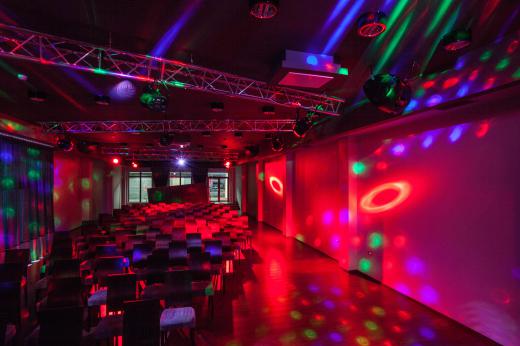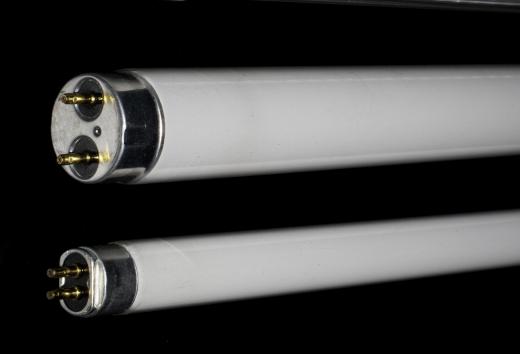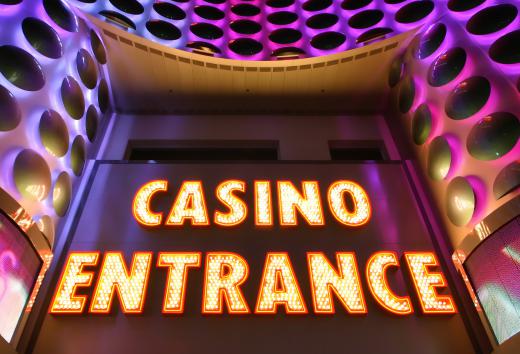What is Neon?
 Mary McMahon
Mary McMahon
Neon is a colorless, odorless, tasteless chemical element. Many consumers are familiar with neon because it is used in eponymous illuminated signs all over the world. The distinctive bright color of these signs has led to the use of the word to describe the hue of any very brightly colored object. There are a number of other uses for the element beyond advertising, however, making its processing a generally lucrative pursuit. Like many other elements, pure neon is difficult to find on Earth, so it must be obtained through a refining process.
The element is classified in the noble gases, making it highly stable and relatively nonreactive. Neon is the second lightest noble gas, after helium, and it has an atomic number of 10. On the periodic table, it is identified with the symbol Ne. The noble gases were recognized in the late 1800s, when scientists realized that an entire class of gases was missing from the periodic table of elements. Like other noble gases, neon does not readily form compounds, although it is not, strictly speaking, inert.

The discovery of neon occurred in 1898, when William Ramsay and Morris Travers, two chemists, were working with a sample of the Earth's atmosphere. The two men chilled the sample so that it liquefied, and then slowly warmed it, capturing each individual gas as it boiled off. The sample included three previously unidentified elements, xenon, krypton, and neon. The name literally means “new one” in Greek, so one can only assume that the discoverers must have said “hrm, here's a new one.”

Curiously, although neon is the fifth most abundant element in the universe, it is actually quite rare on Earth. The bulk of the Earth's neon is bound up in the atmosphere, and it is extracted through a process known as fractional distillation, in which samples of liquefied air are processed to force their components to separate. Because neon is relatively rare, it can get rather expensive. It is not hazardous unless it is allowed to reach high concentrations, in which case it can turn into an asphyxiant, displacing oxygen in the lungs and potentially causing death.

When neon conducts electricity, it turns a distinctive reddish orange color. Other so-called “neon” signs actually use other noble gases to achieve colors such as green and blue. Many colored indicators such as high voltage indicators also use the gas, and the substance is sometimes used in lasers as well. Neon is also used as a coolant, and in high energy physics research.
AS FEATURED ON:
AS FEATURED ON:















Discussion Comments
Is neon found in its pure state or is it bound to another element?
I never knew that neon was dangerous in high concentrations.
I don't understand. So is neon a conductor or not?
what is neon? every one says its colorless, but isn't neon a brightly colored light?
i got an A+ after using this website.
The article presentation is excellent and highly informative.
I used this website for a research guide. It turned out to be a not bad, but not too good. It was okay. I am looking for interesting facts. But if you want to find some serious facts. Dude, this site's what you need! Awesome!
you're greater than any other websites that do not go exactly to the point when explaining.
I really like this website I will use it for school
Post your comments